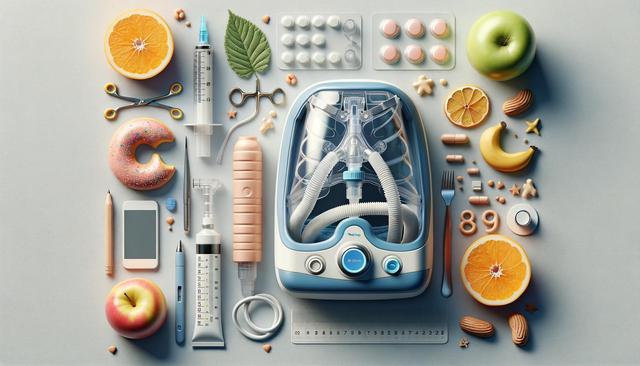What Is Sleep Apnea and Why Treatment Matters
Sleep apnea is a common yet serious sleep disorder where breathing repeatedly stops and starts during sleep. The most prevalent form, obstructive sleep apnea (OSA), occurs when throat muscles intermittently relax and block the airway. Left untreated, sleep apnea can lead to a range of health issues including high blood pressure, heart problems, type 2 diabetes, and daytime fatigue. The condition can also negatively impact mental health, contributing to issues like depression and anxiety due to disrupted sleep cycles.
Recognizing the symptoms is the first step toward effective treatment. Common indicators include loud snoring, gasping for air during sleep, morning headaches, and excessive daytime sleepiness. If you or a loved one experiences these signs, it’s important to consult a healthcare provider. Diagnosing sleep apnea typically involves a sleep study, either conducted in a lab or with an at-home testing kit, which monitors breathing patterns and oxygen levels overnight.
How CPAP Devices Work
Continuous Positive Airway Pressure (CPAP) devices are considered a frontline treatment for obstructive sleep apnea. These machines work by delivering a steady stream of air through a mask that keeps the airway open during sleep. This prevents the pauses in breathing that characterize sleep apnea and helps maintain consistent oxygen levels throughout the night.
The main components of a CPAP system include:
- The CPAP machine itself, which generates the airflow
- A hose that connects the machine to the mask
- A mask that fits over the nose or mouth, depending on the model
Modern CPAP machines often come with features that enhance user comfort, such as heated humidifiers, ramp settings that gradually increase air pressure, and noise reduction technology. These features aim to make the device easier and more comfortable to use consistently, which is key to effective treatment.
Choosing a CPAP Device: Features and Considerations
Selecting a CPAP device can feel overwhelming, especially with the variety of models and features available. While all CPAP machines perform the same basic function, there are differences in design, usability, and additional capabilities. When choosing a device, consider the following factors:
- Pressure settings: Some devices offer fixed pressure, while others adjust automatically based on your breathing
- Mask style: Options include nasal masks, full-face masks, and nasal pillow masks
- Portability: Travel-sized CPAP machines are ideal for frequent travelers
- Noise level: Quieter models may make adherence easier, especially for light sleepers
- Data tracking: Some devices offer app integration to monitor usage and effectiveness
It’s advisable to work with your healthcare provider or a sleep specialist to determine the most suitable device for your needs. They can help interpret your sleep study results and recommend a machine with the appropriate pressure settings and features.
Benefits of Using a CPAP Device
Consistent use of a CPAP device can significantly improve quality of life for individuals with sleep apnea. By ensuring uninterrupted breathing during sleep, CPAP therapy helps restore normal sleep patterns and reduce the associated health risks. Some of the commonly reported benefits include:
- Improved sleep quality and reduced nighttime awakenings
- Increased daytime alertness and energy
- Lower risk of cardiovascular issues
- Improved focus and memory
- Reduced snoring, which can also benefit sleep partners
In addition to physical health improvements, many users report better mood and reduced symptoms of depression after starting CPAP therapy. Adherence is crucial, however, and it may take some time to adjust to sleeping with the device. Support from healthcare providers and access to CPAP user communities can be instrumental in maintaining long-term use.
Tips for Successful CPAP Therapy
Adapting to CPAP therapy can be challenging at first, but there are strategies to help make the transition smoother. Here are some tips to promote successful and consistent use:
- Start by wearing the mask for short periods while awake to become accustomed to the feel
- Use the ramp feature if available, which slowly increases pressure to make falling asleep easier
- Ensure the mask fits properly to prevent air leaks and maximize comfort
- Clean the machine and mask regularly to maintain hygiene and device function
- Consult with your provider if you experience discomfort or ongoing issues
Many people find that after a few weeks of consistent use, CPAP therapy becomes a normal part of their routine. If challenges persist, a different mask style or machine setting might make a big difference. A tailored approach often leads to better outcomes and a higher likelihood of long-term adherence.
Conclusion: A Reliable Path to Better Sleep
CPAP devices offer a reliable and scientifically supported method for managing obstructive sleep apnea. While the adjustment period can be challenging, the long-term health benefits are significant and life-enhancing. From reducing health risks to improving daily energy and mental clarity, CPAP therapy plays a crucial role in restoring restful sleep. For anyone diagnosed with sleep apnea, working with a healthcare provider to find the right CPAP setup is a worthwhile step toward better health and quality of life.


